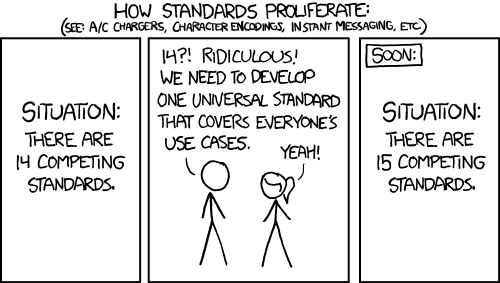LOL, no. That's not how it works
At best, Type-C will co-exist with Type-A and all the other USB ports.
Even with time, USB Type-C may become as popular as USB Micro-B, but Type-A will stick around forever given how cheap it is to implement
USB Type-C is WAY more expensive to implement compared to USB Type-A ports.
Just look at the Pin-out for Type-C compared to Type-A or SuperSpeed Type-A ports.
Think about the number of quality copper wires needed to implement each cable.
The amount of hardware needed to run USB Type-C at full speed per port is just more expensive, the port receptor is more expensive to implement / manufacture. The cabling is more expensive to make if done properly.
USB Type-A has 4 pins, SuperSpeed Type-A has 9 pins
SuperSpeed Type-A can have 1x Full Duplex SuperSpeed Lane.
USB Type-C has 24 fine & delicate pins.
Type-C by default can support up to 2x Full Duplex SuperSpeed Lane.
In USB-C Alternative mode: the port can have up to 3x Full Duplex SuperSpeed Lanes at the cost of dropping built in USB 2.0 Back Compat and updating the hardware controllers to support it (I'm betting USB 5 will be thinking about doing this, killing USB 2.0 back Compat for more speed).
If you take away Bus-Power pins from Type-C and use them in Alternative mode, you could easily have 4x Full Duplex SuperSpeed Lanes, you'll just need to power the connected device via outside DC Power Connector.
That's usually a price worth making if you want to brute force more Full Duplex Bandwidth at the cost of breaking the standard and using a "Alternative Mode" of USB Type-C along with hardware & software to support it.
If you want to go "Max Speed" in Assymetric mode, you could borrow the Side-Band channels and have 1x SuperSpeed lane for a slow one direction and 8x Super Speed lanes for the other direction. Obviously you'll be using a "Alternative Mode" of USB, but since you're not using the standard communication protocols, you can get INCREDIBLE speed by having 8x 20 Gbps SuperSpeed Lanes for a direction and 1x 20 Gbps SuperSpeed Lane for the other direction.
That's how flexible you can get with using the "Alternative Mode" of USB Type-C and intentionally breaking standard like some vendors have chosen when using "Alternative Mode" of the Type-C physical port standard.
This level of programmability and customizability has a cost, and it isn't cheap, you need custom hardware and a modified based USB software stack to do it, but 3rd party vendors have been able to get crazy bandwidth out of Type-C.
This is all before TB5 / USB5 which is thinking about upping the speed of each SuperSpeed Lanes to 80 Gbps via new encoding methods: PAM-3 Encoding modulation.
That comes to 40 Gbps per Full Duplex SuperSpeed Lane.
If the USB standard was smart, they would update USB 4.1 to have SuperSpeed Type-A take the latest SuperSpeed standard of 20 Gbps per SuperSpeed channel and allow a "Cheaper/Simpler" SuperSpeed Type-A port that has 20 Gbps Full Duplex.
We could call it "Type-C mini" or "Mini-C" connector and have less pins / connectors based on a shrunken & modified USB Type-C physical port spec and do most of what Type-C wants, for FAR less $$$ in terms of BoM (Bill of Material) cost to make.
Most Electronics vendors wants things to get "Smaller", and Type-C is unfortunately not "Small Enough" IMO.
The fools who thought USB Type-C was going to take over the world was also thinking that everybody needs to drive "Gas Guzzling LARGE SUV's the size of a Escalade" and that would be the standard of communication everybody needs/have.
The reality is, we need "Small / Medium / Large" connectors, each one suited to a specific purpose.
Small = USB 2.0 Type-A and all it's sibling connectors.
Medium = SuperSpeed Type-A and all it's sibling connectors.
Large = USB 3.x/4.x Type-C

